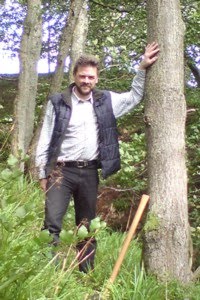Dumbing down through abstraction.
 In two previous posts, [ 1 + 2 ] I have demonstrated that one of the
central images of British Prehistory, the Wessex Roundhouse, is a construct which does not accurately represent the evidence.
In two previous posts, [ 1 + 2 ] I have demonstrated that one of the
central images of British Prehistory, the Wessex Roundhouse, is a construct which does not accurately represent the evidence.
While I am happy to call these roundhouse constructs dumbing
down, what to call the scholarship they generate presents a problem, since it
represents the application of presumably perfectly acceptable theory to an
imaginary data set.
Archaeology is often at its best and most incisive when it
has borrowed from other disciplines, but left to their own devices some academics
have wandered off through the dewy system to delve into ideas about the
relationship between people and built environments. But perhaps sometimes they just look at the pictures.
It is possible for anthropologists to study the relationship
between people and their built environments; the humans can be questioned and observed,
and the spaces inspected. In such a study, we might also wish consider factors of
age, status, and gender, as well as more complex issues pertaining to the
ownership and creation of spaces.
In anthropology, a theory, a set of ideas or a cosmology
which explain the patterns of behaviour associated with particular places can
be developed through the study of people and spaces.
However, in Archaeology the people we study are dead and their spaces destroyed, or they usually are after we have finished with them....






















